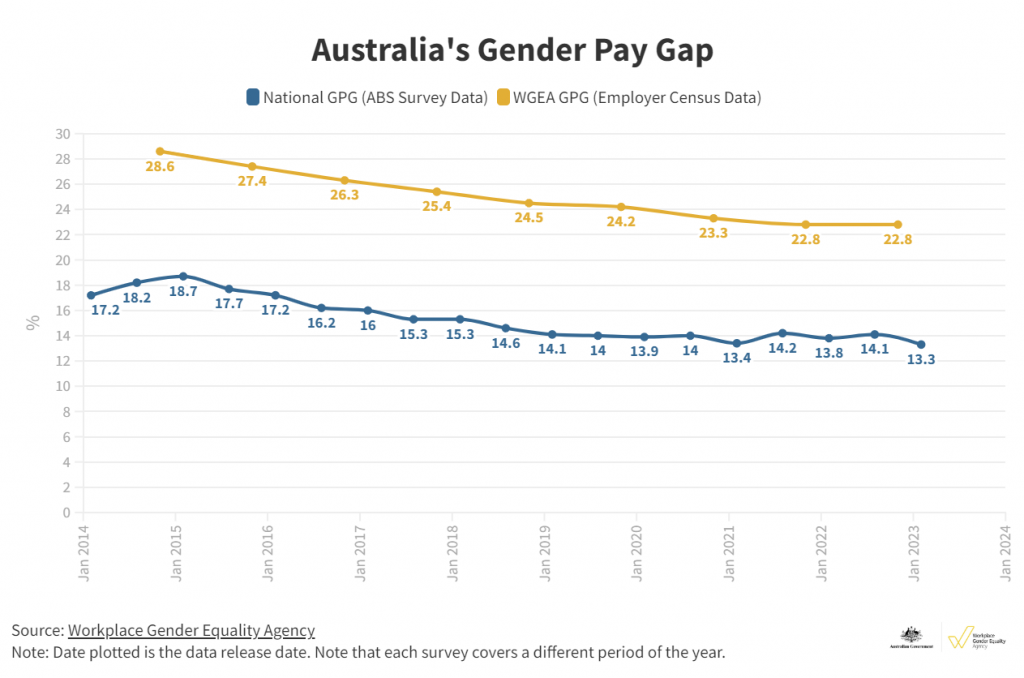The theme for this year’s International Women’s Day is Embrace Equity. I am a firm believer of the adage, “you can’t manage what you don’t measure.” So, if we are truly serious about embracing equity, we need to be clear about our goals and how we plan to achieve them.
At Clicks, we believe that a diverse and inclusive workforce starts with achieving a gender-equal workforce, including in our leadership team. We measure our success in this metric every quarter in our all-hands strategy update. I’m proud to share we have consistently achieved our target since we started tracking some ten years ago, and more than half of our leaders are women.

But setting clear goals is only part of the equation. It is also essential to increase awareness and transparency in the workplace. That is why I welcomed the Fair Work Legislation Amendment (Secure Jobs, Better Pay) Act that was implemented into Australian law in December last year. This reform package includes a ban on pay secrecy policies that aims to close the gender pay gap.
Employers can no longer prohibit employees from sharing salary information. As a result, employees can choose to disclose their salary without fear of punishment. It’s reported that studies from the United States and Canada, where pay secrecy bans are already in place, have shown a reduction in the gender pay gap.
So, what exactly is the gender pay gap?
The Workplace Gender Equality Agency (WGEA) defines the gender pay gap as “a measure of how we value the contribution of men and women in the workforce. Expressed as a percentage or a dollar figure, it shows the difference between the average earnings of women and men.”
Regardless of whether we look at data from the Australian Bureau of Statistics (ABS) or WGEA Employer Census Gender Pay Gap (which draws on data from non-public sector employers with 100 or more employees) there is a gender pay gap between men and women across all industries and occupations.
Australia’s national gender pay gap is currently 13.3% per cent. This drop represents a step in the right direction. However, women still earn only 87 cents for every dollar earned by men, amounting to $13,182 over the course of a year.

Equal pay for work of equal or comparable value is a fundamental human right. However, inequity still exists, driven by gender bias, discrimination, and a historical and systemic undervaluing of female labour. For example, in 1912, the minimum wage for women in Australia was set at 54% of men’s wages. Industry and occupational segregation continue to result in more women in low-paid jobs.
Australia’s base salary gender pay gap in the Professional, Scientific and Technical Services sector almost doubles the national average. The private sector has a significantly higher gender pay gap than the public sector; and the pay gap has increased in Victoria, South Australia, Western Australia, Northern Territory, and the ACT.
However, there is some good news. The current national gender pay gap is the lowest on record. WGEA data shows that the gender pay gap has decreased in three states: New South Wales (from 14.5% to 11%), Queensland (from 15.6% to 14.6%), and Tasmania (from 8.4% to 6%).
Several industries have also seen a decrease in the gender pay gap, including Construction (from 18.8% to 16.1%), Rental, Hiring and Real Estate Services (from 17.4% to 15%), and Public Administration and Safety (from 8.7% to 6%).
Where to from here?
Reducing the gender pay gap improves productivity, economic prosperity, and equality in the workplace. I don’t have all the answers, but I have some simple and practical tips you can include in your hiring today.
- Ensure women are on your hiring panel.
- Include the
following in your job ads:
- “We welcome applications from those returning to the workforce”, as most return-to-work parents are females.
- “Please talk to us about how we could make this role flexible for you”. Women’s workforce participation can be impacted by family and caring responsibilities. This statement invites female candidates to discuss any need for flexible working arrangements.
- Transparency about salary ranges.
- Only include your ‘must have’ requirements in job ads. Delete your ‘nice to have’ wishlist, as studies have shown that females will generally only apply for a position if they meet 100% of the listed requirements in an ad.
I look forward to sharing Clicks’ 2023 Gender Diversity report later this month. This International Women’s Day, I #EmbraceEquity by focusing on clear goals, taking action, and supporting transparency. Will you join me?

Sam Micich
Chief Operating Officer
Clicks has trusted partnerships with Australia’s most effective diversity enterprises. So, whether your goals include more female, neurodiverse, LGBTIQA+, or indigenous workers, we have a partner network to guarantee an appropriate and culturally sensitive recruitment experience.









